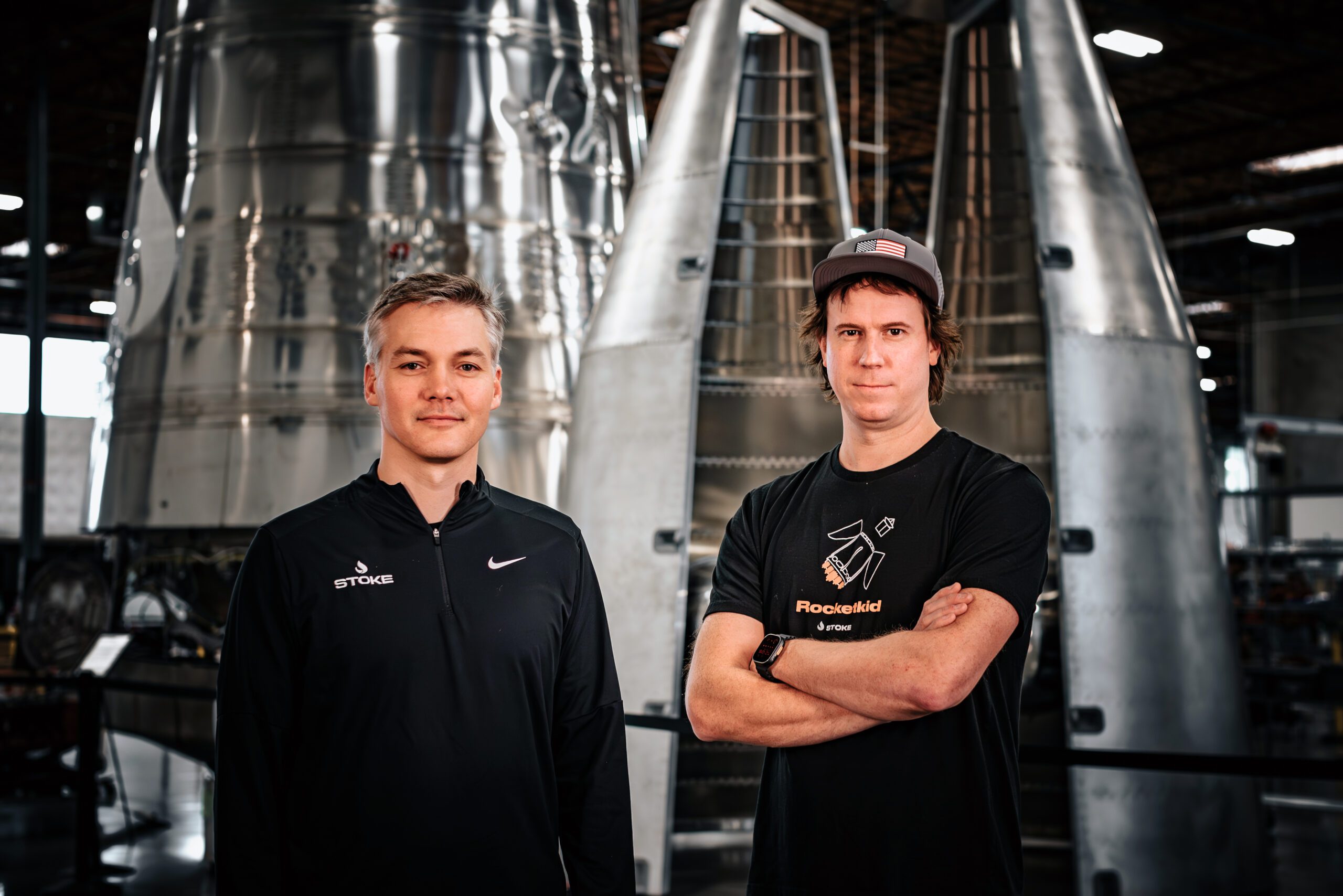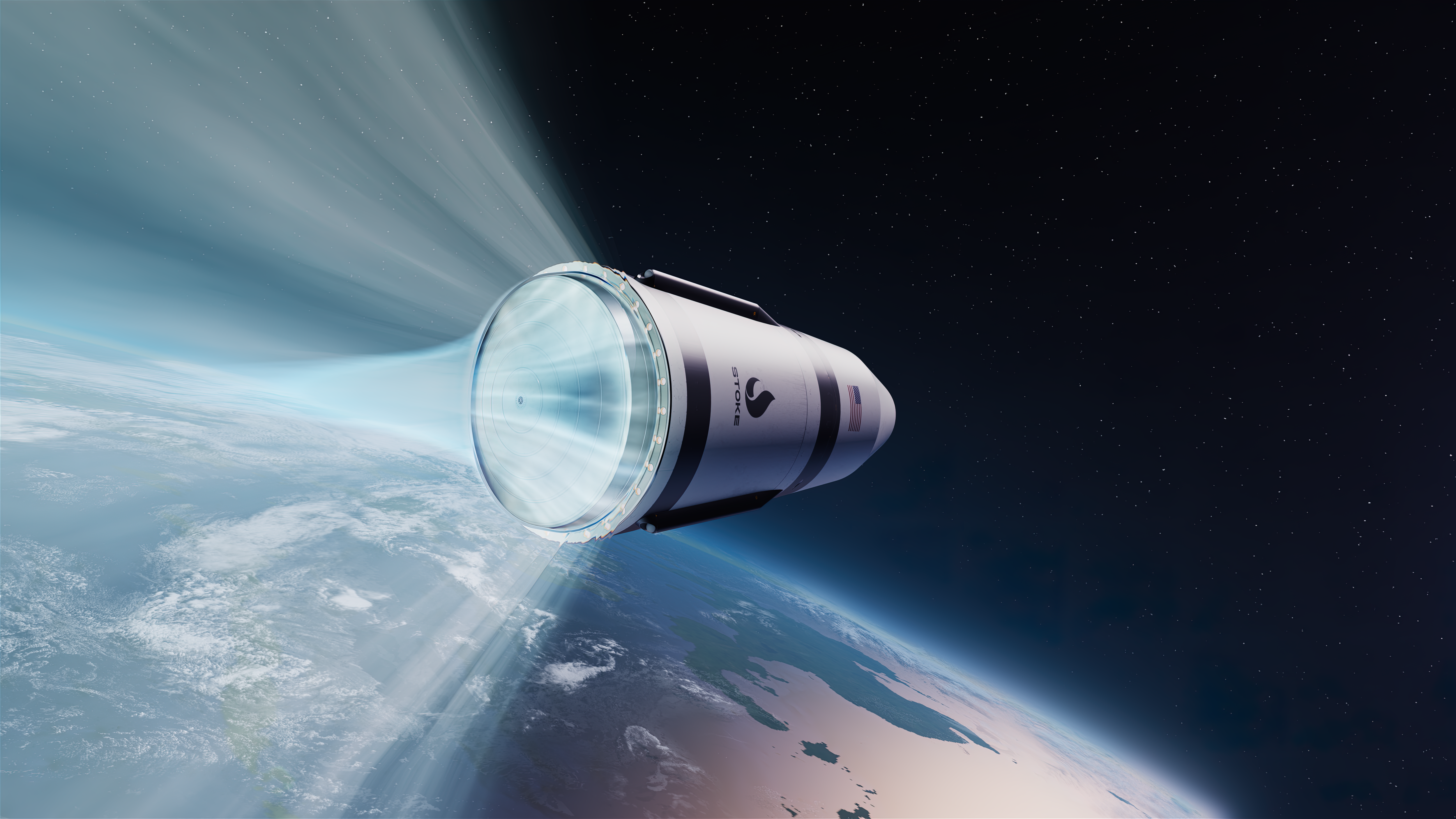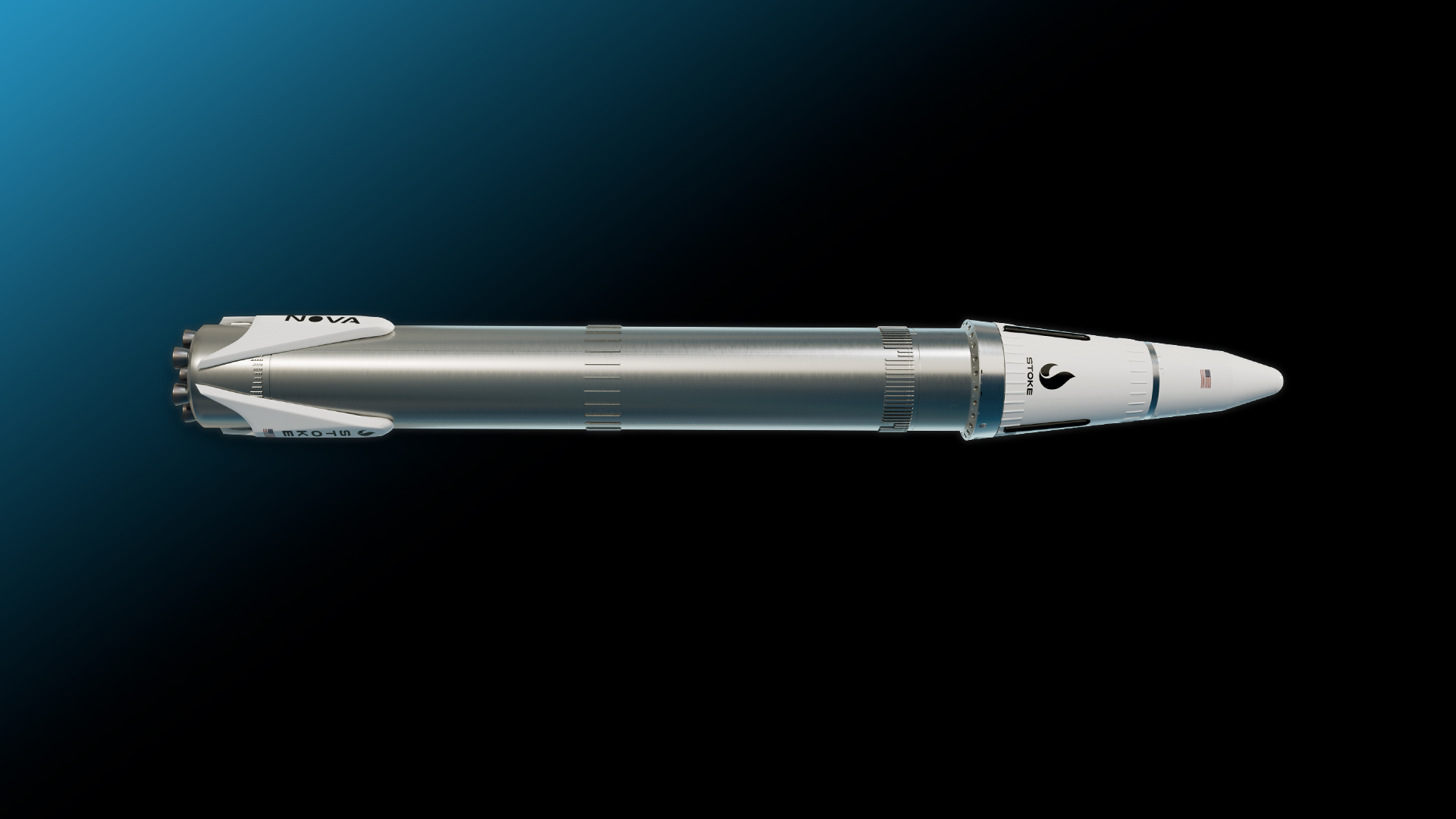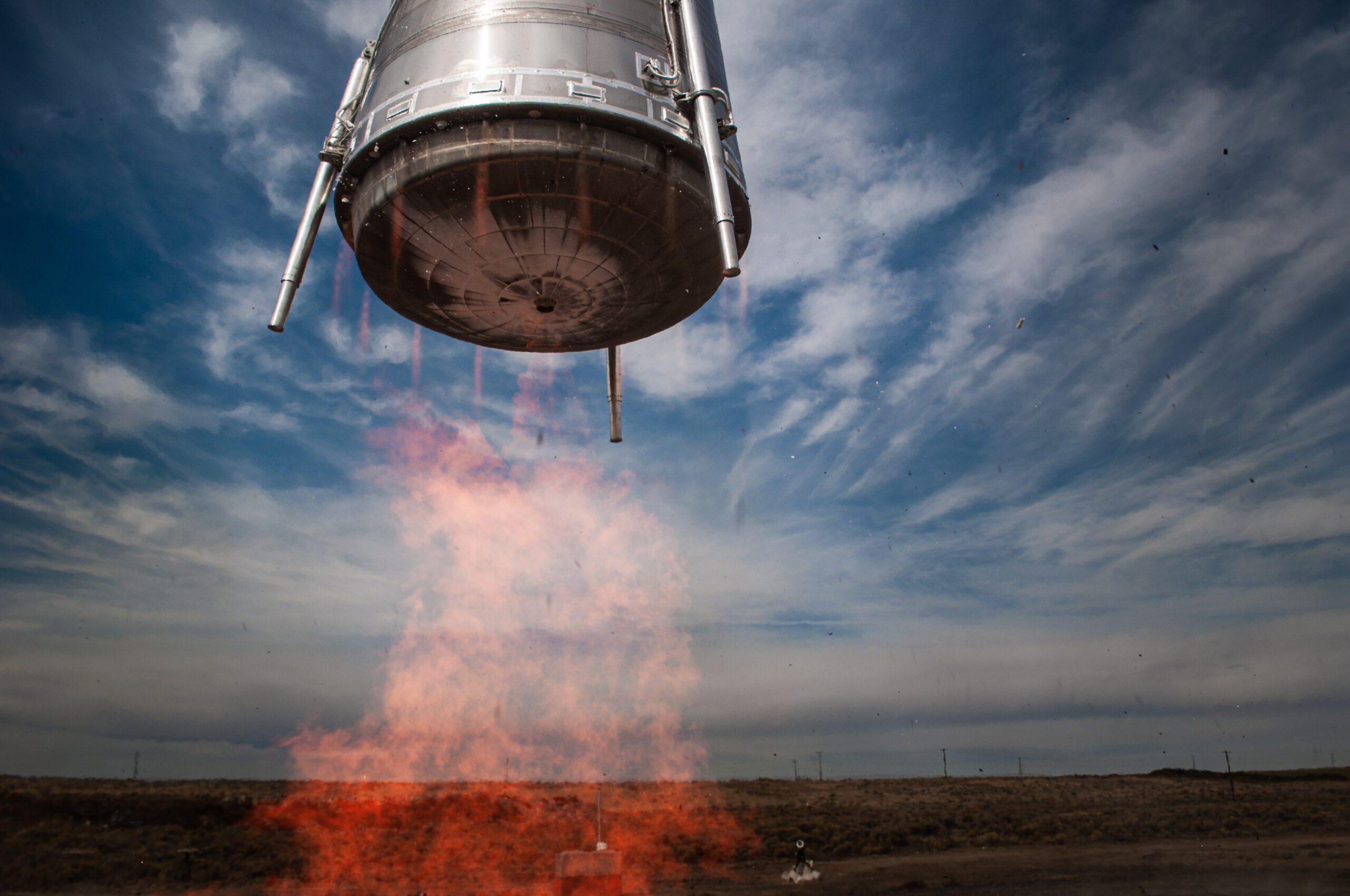
Update on Hopper2: The Hopper Has Landed
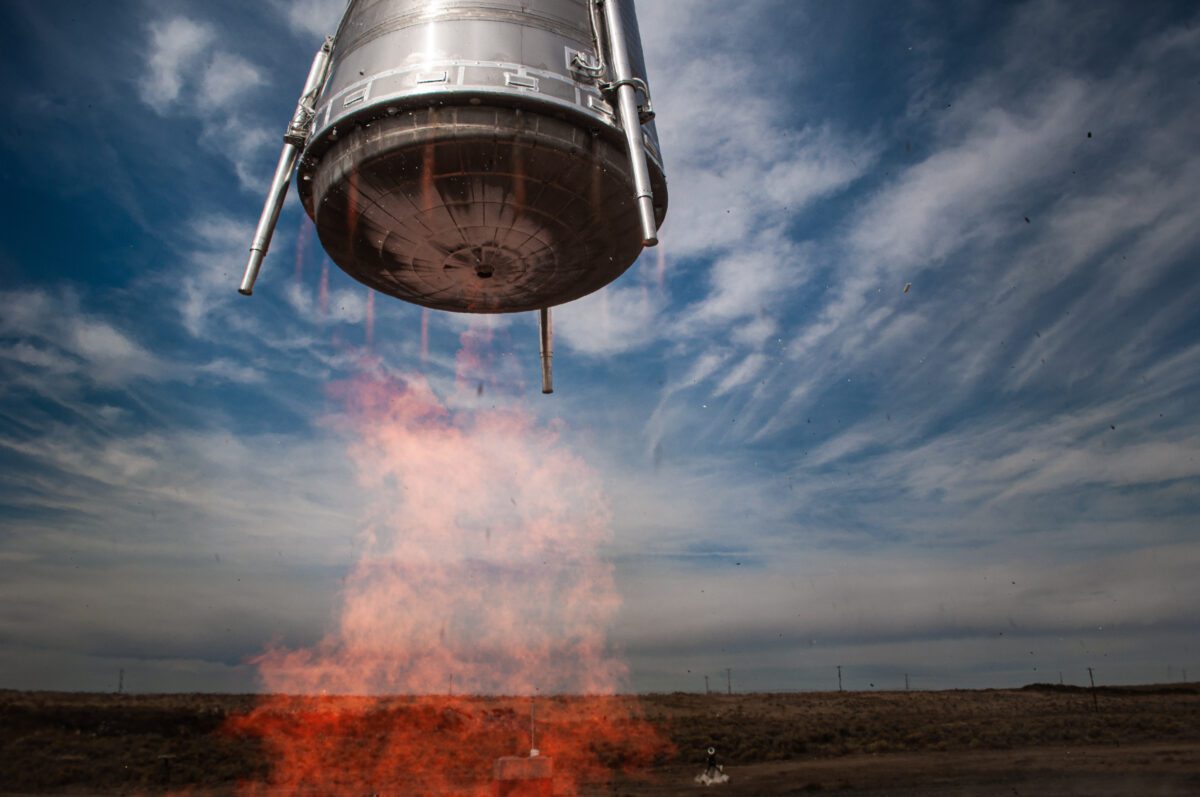
September 17, 2023 – Today at Stoke Space’s test site in Moses Lake, Washington, we successfully conducted a vertical takeoff and vertical landing (VTVL) developmental test flight of our reusable second stage rocket. During this test, known as Hopper2, we were able to successfully launch the Hopper test vehicle to an altitude of 30 feet and land at its planned landing zone following 15 seconds of flight. The test successfully demonstrated our novel hydrogen/oxygen engine, regeneratively cooled heat shield, and differential throttle thrust vector control system, as well as our avionics, software, and ground systems.
This test was the last test in our Hopper technology demonstration program. We successfully completed all of the planned objectives. We’ve also proven that our novel approach to robust and rapidly reusable space vehicles is technically sound, and we’ve obtained an incredible amount of data that will enable us to confidently evolve the vehicle design from a technology demonstrator to a reliable reusable space vehicle.
With this test campaign, we also reached several industry milestones: Stoke conducted the first flight test of a reusable Vertical Takeoff Vertical Landing (VTVL) rocket that uses differential throttling for attitude control. We also conducted the first flight test of a reentry vehicle that uses an active regeneratively cooled heat shield; although this vehicle didn’t directly experience the heat from hypersonic atmospheric re-entry, it has successfully operated at 100% of the expected heat load in a simulated environment.
In addition, we became the fastest company to go from initial seed funding to demonstrating an orbital-class vertical takeoff and vertical landing rocket, the second company in the world to fly a prototype of a fully reusable upper stage rocket, and just the third US company to develop a liquid hydrogen rocket engine.
With our innovative second stage design, our team at Stoke is attempting to do something that has never been done before: design and build a rocket that is 100 percent reusable with a 24-hour turnaround. To reach that goal, we will now continue moving through our development program by increasing focus on our reusable first stage.
